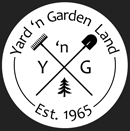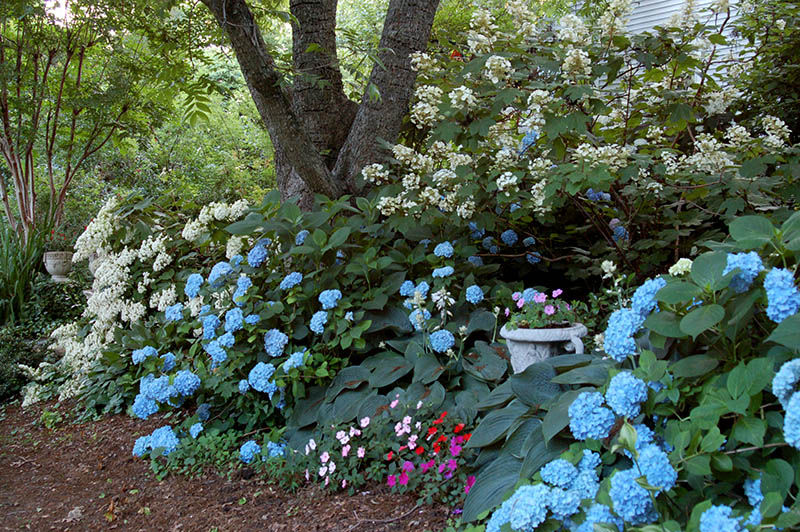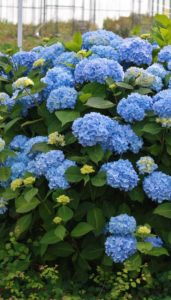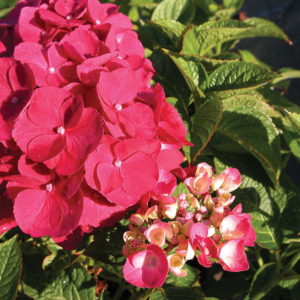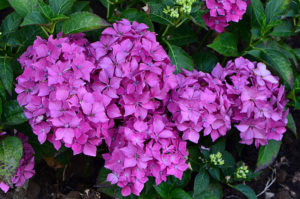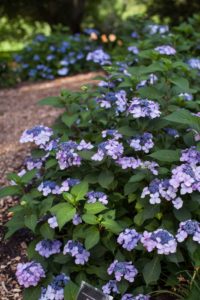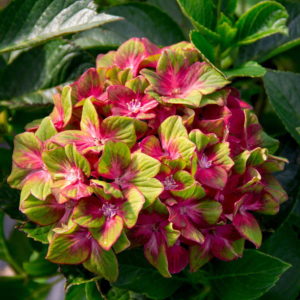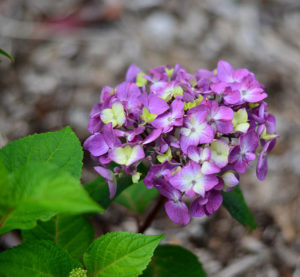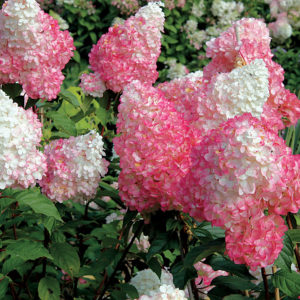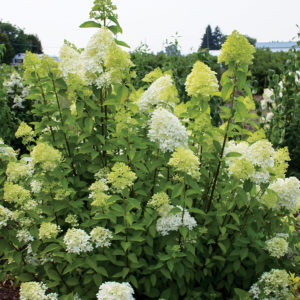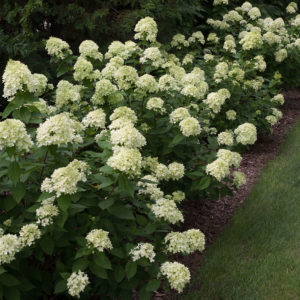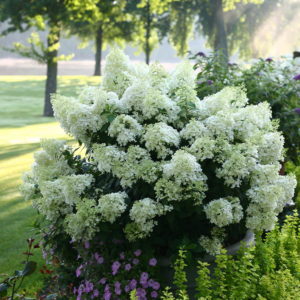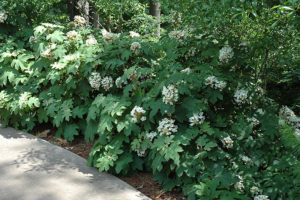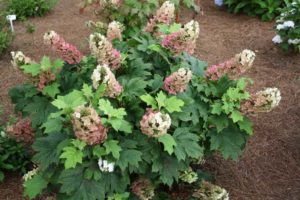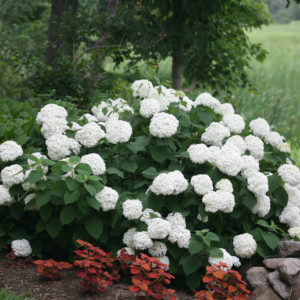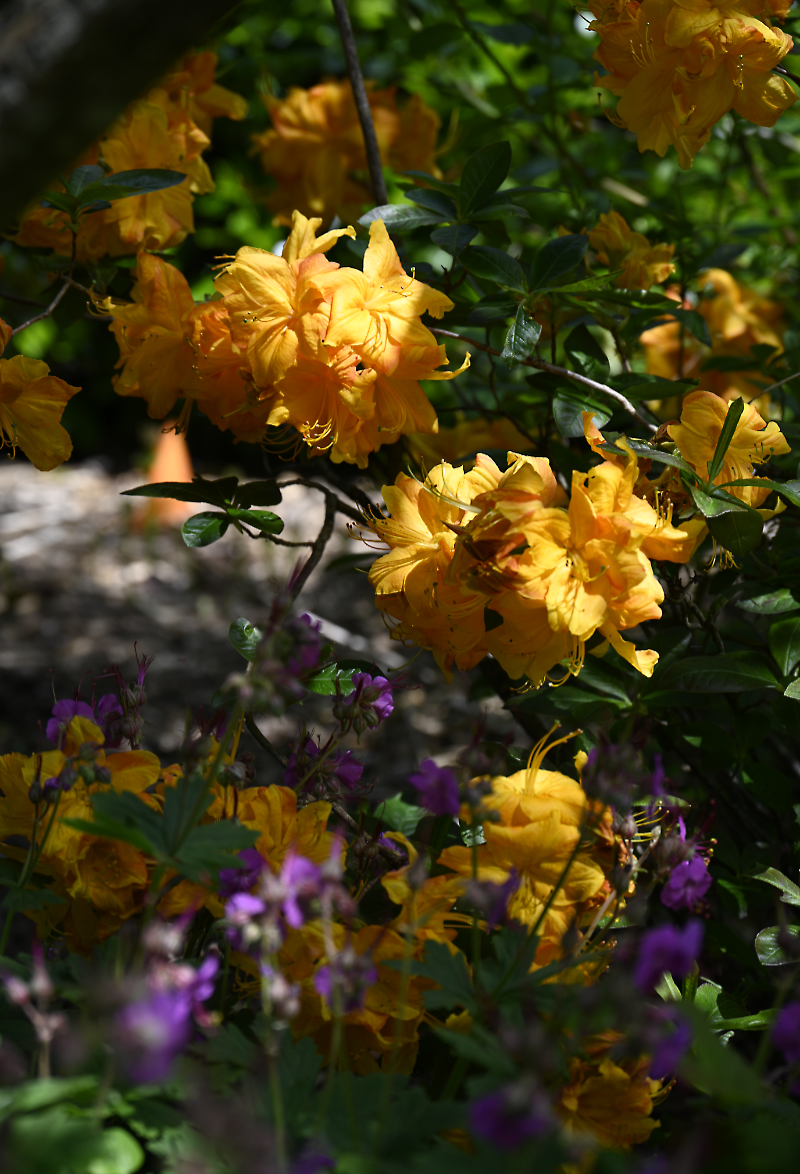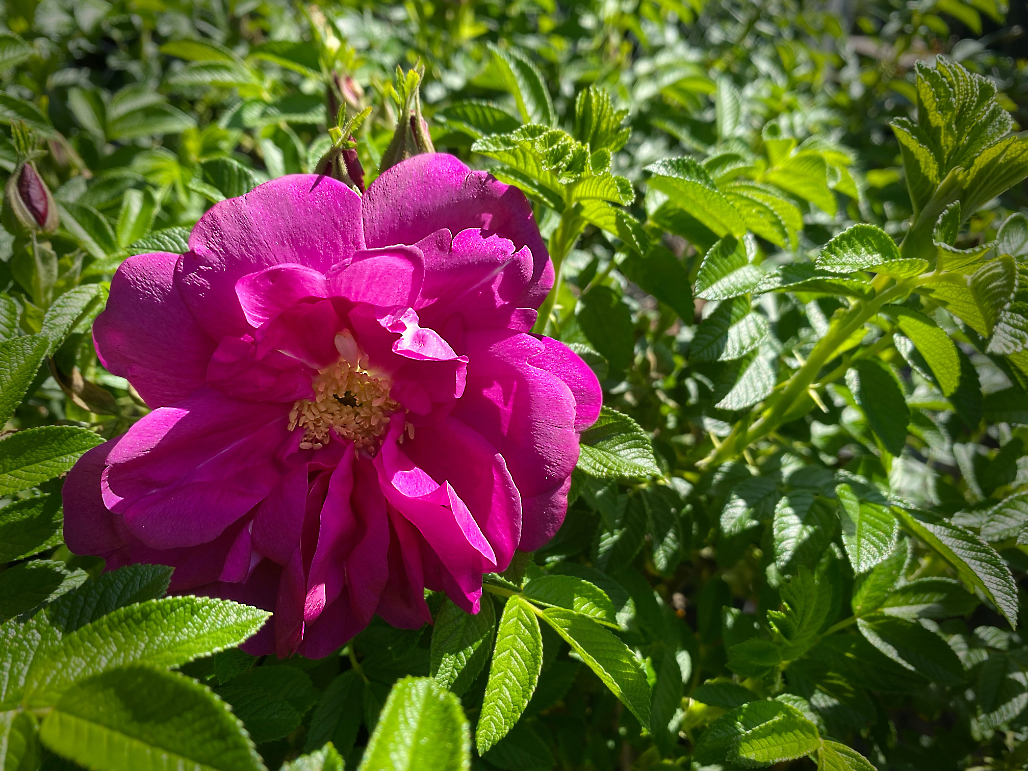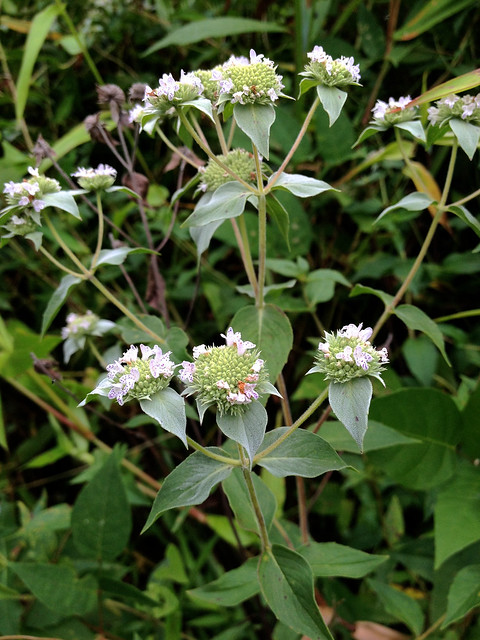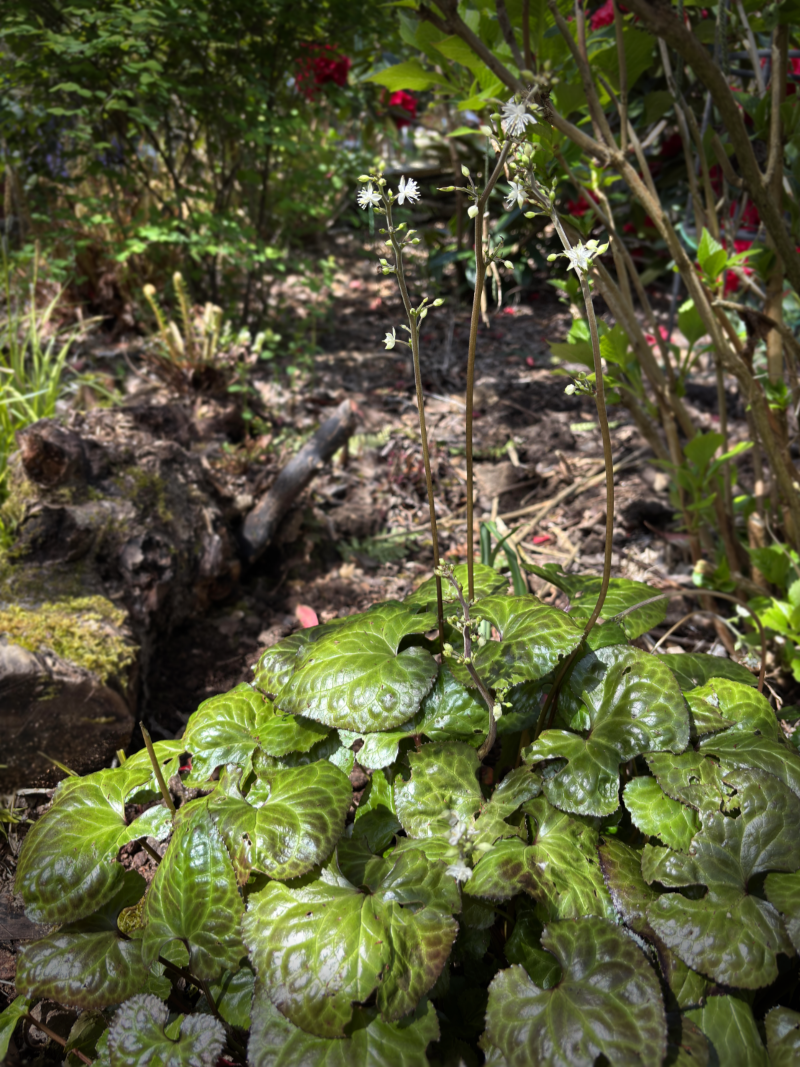Hydrangeas
Hydrangeas are one of our most popular summer flowering shrubs. With their big, dramatic flowers and ease of maintenance, it is easy to see why.
There are several different types of Hydrangea:
Macrophylla (aka “Big Leaf”) is probably what most people think about when hydrangeas are mentioned. These shrubs have been grown for centuries in American gardens. Flowers in this group come in two types – Mopheads and Lacecaps. The old-fashioned varieties bloom on old wood but newer introductions are more likely to flower on new growth as well as year-old stems, which means flowers are dependable even after a tough winter. Flower colors usually range from pink to blue and can be affected by soil conditions. Partial shade is recommended during the hottest time of the day.
Some Macrophylla hydrangea varieties available at Yard ‘N Garden Land:
Paniculata (aka “Panicle” or “PeeGee”) are very cold-hardy hydrangeas that bloom on new wood. They are tall, upright shrubs that have white cone-shaped flowers that appear in mid to late summer that change color as they age. Panicle hydrangeas can be grown in full sun.
Some Paniculata hydrangea varieties available at Yard ‘N Garden Land:
Quercifolia (aka “Oakleaf”) are larger shrubs with large oak-shaped leaves and long, cone-shaped flowers that begin as white and fade to pink or red later in the season. They need a lot of space but dwarf varieties have recently been introduced. They perform well in either sun or partial shade.
Some Quercifolia hydrangea varieties available at Yard ‘N Garden Land:
Arborescens (aka “Smooth” or “Wild”) have large, white pom-pom type blooms. The variety “Annabelle” has been popular for decades and newer introductions have recently appeared. Blooms appear on new wood and they can be pruned hard in late winter or early spring. Partial shade is recommended during the hottest time of the day.
Some Arborescens hydrangea varieties available at Yard ‘N Garden Land:
Growing Guidelines –
Hydrangeas are moisture loving plants and will languish in hard, dry soils. They will flourish in moist, well-drained soils that have been enriched with organic materials. Watering is necessary especially in periods of drought. Plants will wilt when they need watering. Be aware though, that they will also wilt during extreme hot periods even after they have been watered. They will perk back up after the temperatures have cooled in the evening.
Dig a generous hole, wider than the root ball and add compost, aged manure, shredded leaves, peat moss, etc. with the original soil. Position the plant slightly above soil level, fill in with the ammended native soil and water well. Creating a small dam around the plant will help ensure that water does not run off and seeps down to the roots of the plant. Surround the plant with 1-2 inches of mulch, being careful not to mound the mulch up against the plant stems. Give the newly planted hydrangea a good watering and continue to water deeply at least once per week or several times per week if there is no rain.
Do not add fertilizer until the second season. In the early spring of the second year, a fertilizer for acid-loving plants can be added. However, if the plant appears healthy, happy and growing well, fertilizer may not be needed at all.
Pruning – During the first few years, pruning may not be necessary with the exception of removing faded flower heads and dead limbs. After plants begin to mature, older canes can be cut down to the ground and newer canes should not be cut by more than one third. Macrophylla hydrangeas should be pruned AFTER blooming (with the exception of the ‘Endless Summer’ varieties which can be pruned any time). Paniculata and Arborescens types can be cut down drastically in late winter if size is an issue.
Save
